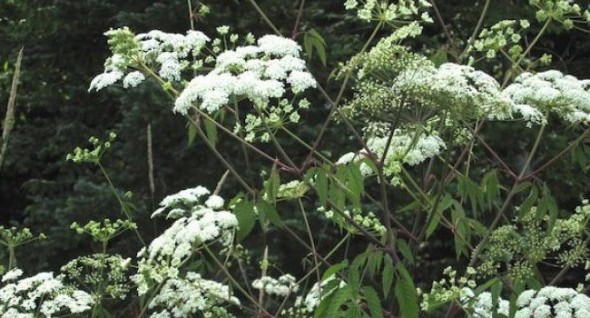
……………………………………………………………………
A routine walk could end in tragedy for western U.S. dog owners who don’t keep a practiced eye on what their pet consumes.
Such was the case for a Colorado woman who took the family’s border collie on a hike at the Horsetooth Reservoir. Not long after “playfully chewing” some plants at the water’s edge, the dog took ill, Dr. Dawn Duval, Department of Clinical Sciences associate professor at Colorado State University, told PetMD’s The Daily Vet blog. Within the hour, the dog was dead.
The U.S. Department of Agriculture (USDA) describes water hemlock (Cicuta douglasii) as “the most violently toxic plant that grows in North America.” But generally, Dr. Jennifer Coates wrote, “water hemlock poisoning almost always occurs in grazing animals — cattle, horses, etc.
“Water hemlock contains cicutoxin, tiny amounts of which can have a dramatic, negative effect on the nervous system of animals (including people). All parts of the water hemlock plant are poisonous, but the highest levels of cicutoxin are found in the roots.”
Much like the tragic incident with the Colorado border collie, victims of water hemlock poisoning present signs within minutes to a few hours; death can occur between 15 minutes and 2 hours after clinical signs appear.
Symptoms to watch for include: nervousness, drooling, muscle twitching, dilated pupils, rapid breathing and tremors.
Water hemlock, says Coates, is not necessarily something to be over concerned about. Dogs don’t generally seek it out to eat.
“However, I thought this case was an important illustration as to why we all need to ‘expect the unexpected’ when out with our dogs.”
Leashed walking, a practiced eye and a good grasp of the “drop” command, however, can go a very long way in keeping your beloved pet safe.
